Vertical Precipitation Estimation Using Microwave Links in Conjunction with Weather Radar
Abstract
:1. Introduction
2. Materials and Methods
2.1. Theory
2.2. Methods
3. Results
3.1. The Experimental Setup
3.2. Results
4. Conclusions
Author Contributions
Funding
Acknowledgments
Conflicts of Interest
References
- Olsen, R.O.; Rogers, D.V.; Hodge, D. The aRb relation in the calculation of rain attenuation. IEEE Trans. Antennas Propag. 1978, 26, 318–329. [Google Scholar] [CrossRef]
- Messer, H.; Zinevich, A.; Alpert, P. Environmental monitoring by wireless communication networks. Science 2006, 312, 713. [Google Scholar] [CrossRef] [PubMed]
- Messer, H. Rainfall Monitoring Using Cellular Networks [In the Spotlight]. IEEE Signal Process. Mag. 2007, 24, 144-142. [Google Scholar] [CrossRef]
- Leijnse, H.; Uijlenhoet, R.; Stricker, J.N.M. Rainfall measurement using radio links from cellular communication networks. Water Resour. Res. 2007, 43. [Google Scholar] [CrossRef] [Green Version]
- David, N.; Alpert, P.; Messer, H. Technical Note: Novel method for water vapour monitoring using wireless communication networks measurements. Atmos. Chem. Phys. 2009, 9, 2413–2418. [Google Scholar] [CrossRef] [Green Version]
- Harel, O.; Messer, H. Extension of the Mflrt to detect an unknown deterministic signal using multiple sensors, applied for precipitation detection. IEEE Signal Process. Lett. 2013, 20, 945–948. [Google Scholar] [CrossRef]
- Zinevich, A.; Alpert, P.; Messer, H. Estimation of rainfall fields using commercial microwave communication networks of variable density. Adv. Water Resour. 2008, 31, 1470–1480. [Google Scholar] [CrossRef]
- Goldshtein, O.; Messer, H.; Zinevich, A. Rain rate estimation using measurements from commercial telecommunications links. IEEE Trans. Signal Process. 2009, 57, 1616–1625. [Google Scholar] [CrossRef]
- Messer, H.; Sendik, O. A new approach to precipitation monitoring: A critical survey of existing technologies and challenges. IEEE Signal Process. Mag. 2015, 32, 110–122. [Google Scholar] [CrossRef]
- Liberman, Y.; Samuels, R.; Alpert, P.; Messer, H. New algorithm for integration between wireless microwave sensor network and radar for improved rainfall measurement and mapping. Atmos. Meas. Tech. 2014, 7, 3549–3563. [Google Scholar] [CrossRef] [Green Version]
- Evans, E.; Stewart, R.E.; Henson, W.; Saunders, K. On precipitation and Virga over three locations during the 1999–2004 Canadian Prairie drought. Atmos. Ocean 2011, 49, 366–379. [Google Scholar] [CrossRef]
- Fraser, A.B.; Bohren, C.F. Is Virga rain that evaporates before reaching the ground? Mon. Weather Rev. 1992, 120, 1565–1571. [Google Scholar] [CrossRef]
- Sassen, K.; Krueger, S.K. Toward an empirical definition of Virga: Comments on “Is virga rain that evaporates before reaching the ground?”. Mon. Weather Rev. 1993, 121, 2426–2428. [Google Scholar] [CrossRef]
- Ciach, G.J. Local random errors in tipping-bucket rain gauge measurements. J. Atmos. Ocean. Technol. 2003, 20, 752–759. [Google Scholar]
- Specific Attenuation Model for Rain for Use in Prediction Methods; ITU-R Recommendations; P Series Fasicle; ITU: Geneva, Switzerland, 2005.
- Millimeter Wave Propagation: Spectrum Management Implications. Available online: https://transition.fcc.gov/Bureaus/Engineering_Technology/Documents/bulletins/oet70/oet70a.pdf (accessed on 29 May 2018).
- Schlesinger, M.E.; Oh, J.H.; Rosenfeld, D. A parameterization of the evaporation of rainfall. Mon. Weather Rev. 1988, 116, 1887–1895. [Google Scholar] [CrossRef]
- Ostrometzky, J.; Raich, R.; Eshel, A.; Messer, H. Calibration of the attenuation-rain rate power-law parameters using measurements from commercial microwave networks. In Proceedings of the 2016 IEEE International Conference on Acoustics, Speech and Signal Processing (ICASSP), Shanghai, China, 20–25 March 2016; pp. 3736–3740. [Google Scholar]
- Eshel, A. Commercial Microwave Links and Radar Integration in Respect to Flash Floods in the Dead Sea Area. Master’s Thesis, Tel Aviv University, Tel Aviv, Israel, 2017. [Google Scholar]
- Raich, R. On the Use of Commercial Microwave Links for Rainfall Profile Estimation in Semi-Arid Areas. Master’s Thesis, Tel Aviv University, Tel Aviv, Israel, 2018. [Google Scholar]
- Rozalis, S.; Morin, E.; Yair, Y.; Price, C. Flash flood prediction using an uncalibrated hydrological model and radar rainfall data in a Mediterranean watershed under changing hydrological conditions. J. Hydrol. 2010, 394, 245–255. [Google Scholar] [CrossRef]

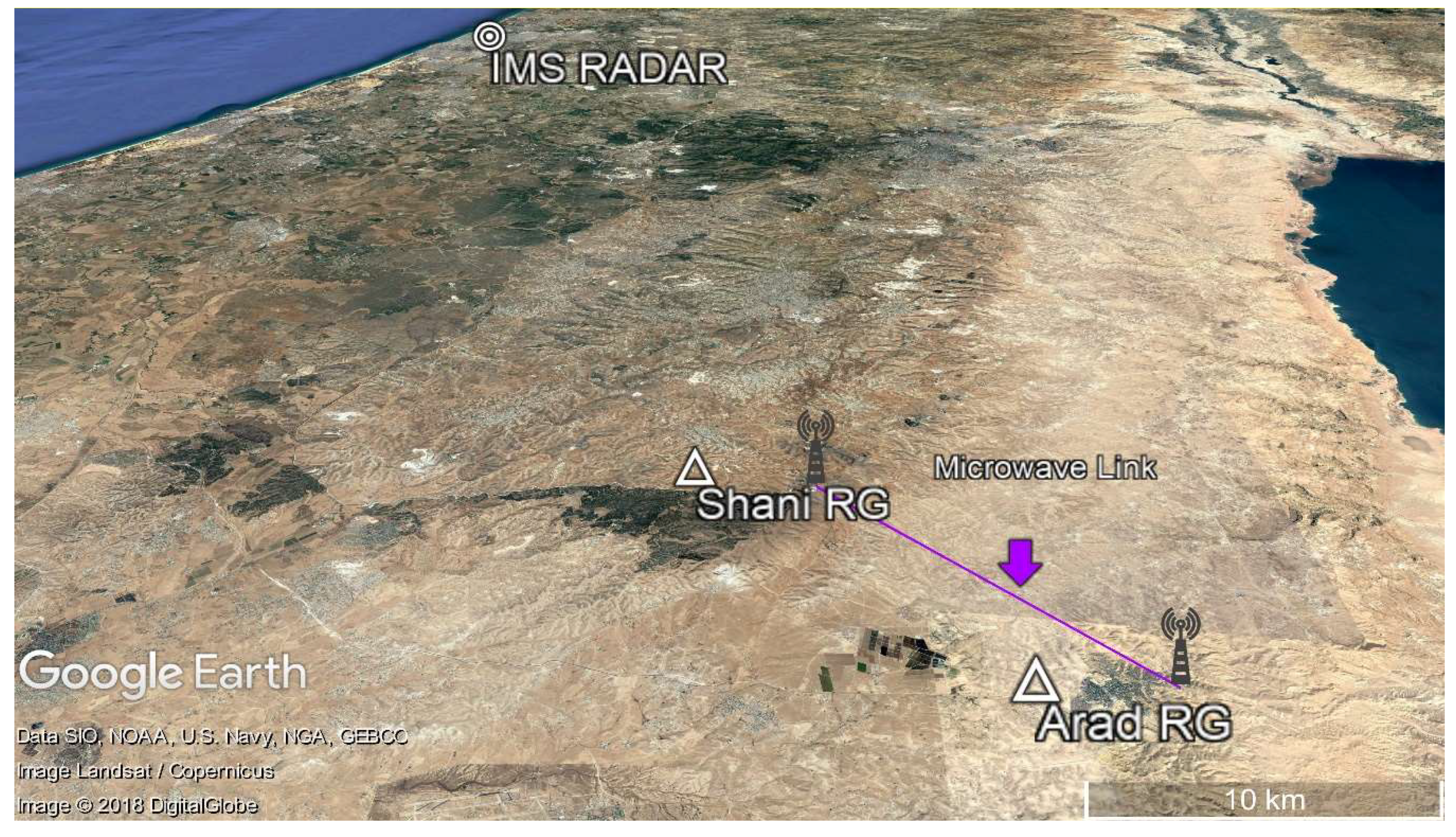
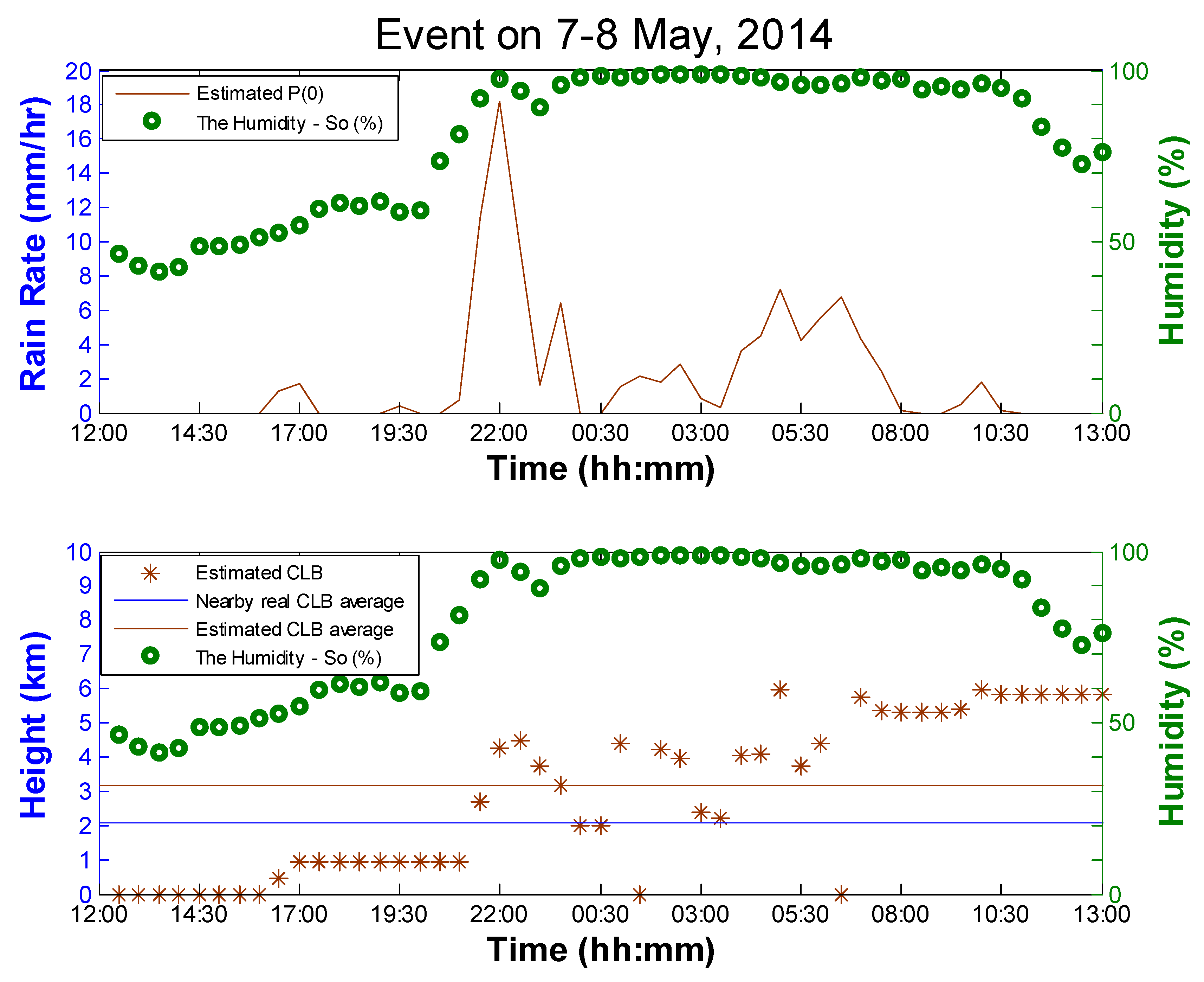
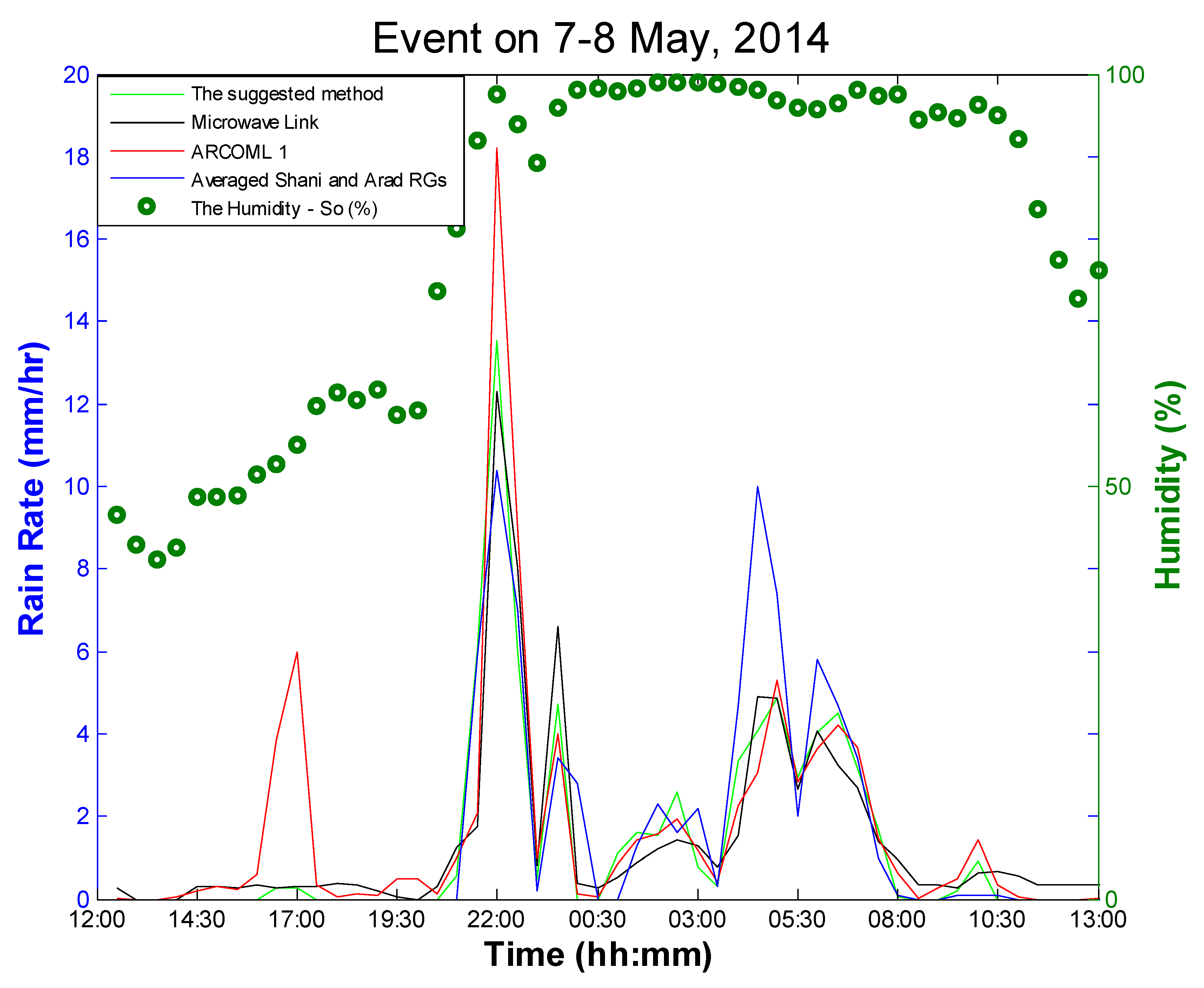
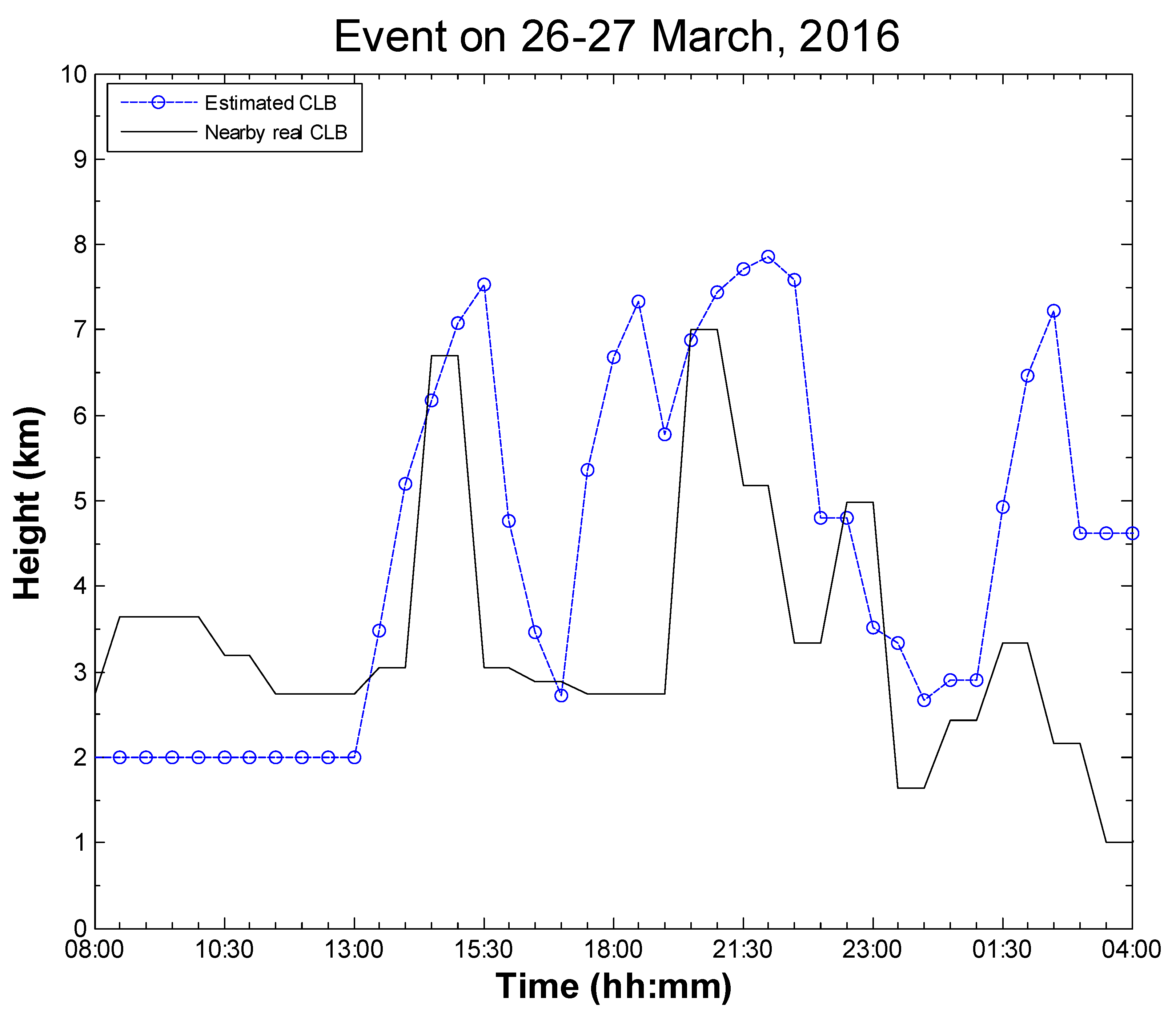
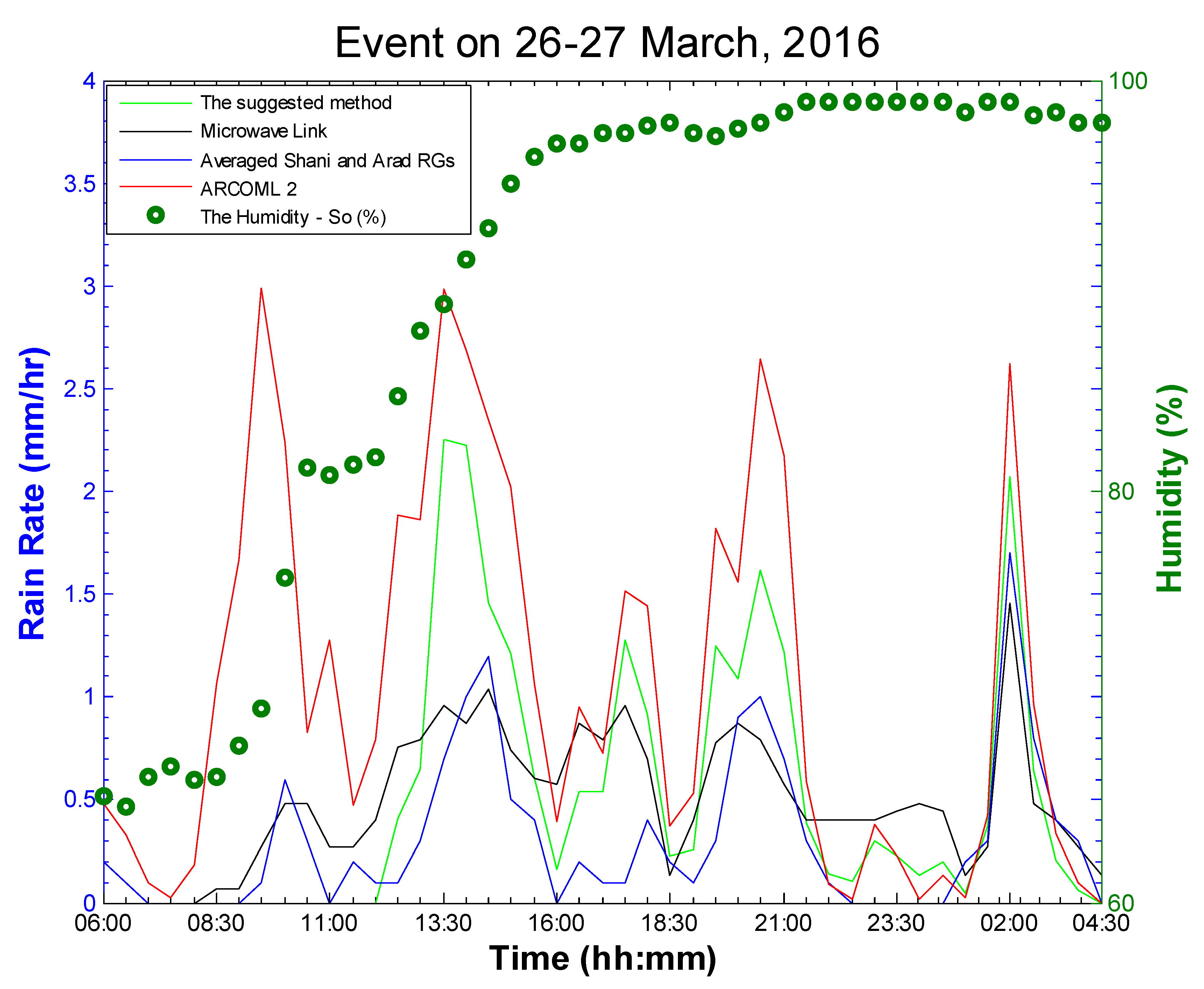
| Caption | Correlation with Shani RG | Correlation with Arad RG | Correlation with the Average of Arad & Shani RGs |
|---|---|---|---|
| Shani RG | 1 | 0.4768 | 0.8259 |
| Arad RG | 0.4768 | 1 | 0.8894 |
| CML | 0.4636 | 0.9627 | 0.8586 |
| ARCOML1 (0.35–1.94 km) | 0.3233 | 0.9060 | 0.7493 |
| ARCOML2 (1.28–2.86 km) | 0.4911 | 0.9385 | 0.8574 |
| The suggested method | 0.5569 | 0.9615 | 0.8926 |
| Caption | Correlation with Shani RG | Correlation with Arad RG | Correlation with the Average of Arad & Shani RGs |
|---|---|---|---|
| Shani RG | 1 | 0.6775 | 0.9300 |
| Arad RG | 0.6775 | 1 | 0.9003 |
| CML | 0.5956 | 0.6649 | 0.6909 |
| ARCOML1 (0.35–1.94 km) | 0.6650 | 0.6263 | 0.7028 |
| ARCOML2 (1.28–2.86 km) | 0.6443 | 0.5729 | 0.6608 |
| The suggested method | 0.6861 | 0.7543 | 0.7890 |
© 2018 by the authors. Licensee MDPI, Basel, Switzerland. This article is an open access article distributed under the terms and conditions of the Creative Commons Attribution (CC BY) license (http://creativecommons.org/licenses/by/4.0/).
Share and Cite
Raich, R.; Alpert, P.; Messer, H. Vertical Precipitation Estimation Using Microwave Links in Conjunction with Weather Radar. Environments 2018, 5, 74. https://0-doi-org.brum.beds.ac.uk/10.3390/environments5070074
Raich R, Alpert P, Messer H. Vertical Precipitation Estimation Using Microwave Links in Conjunction with Weather Radar. Environments. 2018; 5(7):74. https://0-doi-org.brum.beds.ac.uk/10.3390/environments5070074
Chicago/Turabian StyleRaich, Roi, Pinhas Alpert, and Hagit Messer. 2018. "Vertical Precipitation Estimation Using Microwave Links in Conjunction with Weather Radar" Environments 5, no. 7: 74. https://0-doi-org.brum.beds.ac.uk/10.3390/environments5070074





